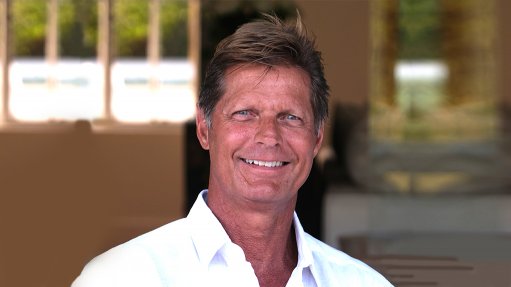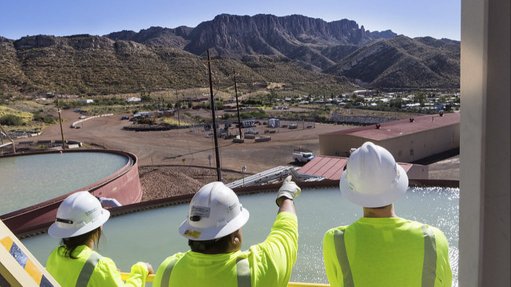Green hydrogen could sustainably industrialise Africa, boost GDP in six key countries – new report
With global demand for hydrogen projected to rise sevenfold by 2050, new analysis from the Africa Green Hydrogen Alliance (AGHA) and analytical support from McKinsey, quantifies opportunity for the six current member countries of the alliance, namely Egypt, Kenya, Mauritania, Morocco, Namibia and South Africa.
The report, titled ‘Africa’s Green Hydrogen Potential’, outlines that, by 2050, green hydrogen could increase the gross domestic product (GDP) of the six countries by $126-billion, which is equivalent to 12% of these countries’ current GDP.
The report is considered a “wake-up call” to investors and policymakers to help unlock the opportunity, says the AGHA.
Overall, the analysis finds that, if governments globally deliver on their existing commitments to reduce emissions, demand for green hydrogen, which is produced using renewable energy, will grow sevenfold from today’s levels to 607-million tonnes by 2050.
Based on the solar and wind power potential of countries in Africa, the analysis finds that many African countries – particularly in the north and south of the continent – are well positioned to produce low-cost green hydrogen.
With energy costs making up more than 60% of hydrogen production costs, bountiful low-cost renewable energy is a large competitive advantage, the report stated. The production costs of green hydrogen in Africa could drop by about 50% between 2025 and 2050, as the cost of energy falls and the supply chain scales up.
This cost-competitiveness could allow these six countries to meet the entirety of their own demand for green hydrogen and related-products needed for heavy industry and segments of transport, estimated at between 10-million and 18-million tonnes by 2050.
This would include the use of green hydrogen as a replacement fuel for coal in steelmaking, or the production of green ammonia that is used to make fertiliser.
The high potential in wind and solar energy means that these countries could produce green hydrogen and related products (such as ammonia) in a competitive fashion, both meeting domestic demand for hard-to-abate applications like heavy industry and off-road transport, in addition to growing market exports.
The European Union, Japan and South Korea, which are identified as priority export markets, reflect the existing infrastructure and high level of demand from existing manufacturing centres that are not able to fulfil all their clean hydrogen needs.
Given their natural resources, the six member countries of the alliance could collectively supply more than one-fifth of the world’s demand for green hydrogen by 2050.
However, an investment of between $450-billion and $900-billion is needed between now and 2050 to realise this potential.
Production of green hydrogen for domestic consumption and export in the six countries could create up to 4.2-million new jobs and contribute to an increase of between $66-billion and $126-billion in these countries’ GDP by 2050, equivalent to between 6% and 12% of their current GDP.
If the production potential of these six countries is achieved, it could help abate about 6.5 Gt of cumulative carbon dioxide (CO2) emissions globally by 2050, nearly equivalent to the combined CO2 emissions in the US and Europe in 2021.
To capture this market, the six countries would need to rapidly expand their renewable energy capacity, as well the capacity of electrolysers to convert water into hydrogen.
This includes, by 2030, between 29 GW and 56 GW of additional electrolyser capacity. This is up to 17% of the total global green hydrogen capacity that may be needed by 2030 to align with limiting global warming to 1.5 °C.
The AGHA, with support from the UN Climate Change High-Level Champions, the Green Hydrogen Organisation and the African Development Bank (AfDB), is therefore calling for greater cooperation between governments and the private sector to unlock the investment needed.
UN Climate Change High-Level Champion Nigel Topping says the study confirms that Africa stands to become a leader in the global green hydrogen arena.
“By investing in green hydrogen, the frontrunner countries in the AGHA can create millions of jobs and unlock a roaring economic engine. It's key that the deployment of green hydrogen aims to maximise benefits to local communities and spur the creation of new green industries such as green steel and fertiliser,” he said.
However, to achieve this goal, Topping says the private sector and financing community should step up and unlock investments, while meaningfully engaging local communities to craft an overwhelmingly positive story for Africa and the climate.
Green Hydrogen Organisation CEO Jonas Monberg, meanwhile, comments that the report provides a unique insight into the potential of harnessing the sun and wind in six African countries to build green hydrogen economies, producing fertilisers and steel, exporting energy, and having more of it at home.
“For the climate and for the development of these countries, we should urgently mobilise the [investment amount] it will cost to realise this potential.”
AfDB director for energy financial solutions, policy and regulation Wale Shonibare, meanwhile, adds that “green hydrogen offers Africa the opportunity to play a key role in driving the world's transition to net-zero emissions”.
Comments
Press Office
Announcements
What's On
Subscribe to improve your user experience...
Option 1 (equivalent of R125 a month):
Receive a weekly copy of Creamer Media's Engineering News & Mining Weekly magazine
(print copy for those in South Africa and e-magazine for those outside of South Africa)
Receive daily email newsletters
Access to full search results
Access archive of magazine back copies
Access to Projects in Progress
Access to ONE Research Report of your choice in PDF format
Option 2 (equivalent of R375 a month):
All benefits from Option 1
PLUS
Access to Creamer Media's Research Channel Africa for ALL Research Reports, in PDF format, on various industrial and mining sectors
including Electricity; Water; Energy Transition; Hydrogen; Roads, Rail and Ports; Coal; Gold; Platinum; Battery Metals; etc.
Already a subscriber?
Forgotten your password?
Receive weekly copy of Creamer Media's Engineering News & Mining Weekly magazine (print copy for those in South Africa and e-magazine for those outside of South Africa)
➕
Recieve daily email newsletters
➕
Access to full search results
➕
Access archive of magazine back copies
➕
Access to Projects in Progress
➕
Access to ONE Research Report of your choice in PDF format
RESEARCH CHANNEL AFRICA
R4500 (equivalent of R375 a month)
SUBSCRIBEAll benefits from Option 1
➕
Access to Creamer Media's Research Channel Africa for ALL Research Reports on various industrial and mining sectors, in PDF format, including on:
Electricity
➕
Water
➕
Energy Transition
➕
Hydrogen
➕
Roads, Rail and Ports
➕
Coal
➕
Gold
➕
Platinum
➕
Battery Metals
➕
etc.
Receive all benefits from Option 1 or Option 2 delivered to numerous people at your company
➕
Multiple User names and Passwords for simultaneous log-ins
➕
Intranet integration access to all in your organisation


















